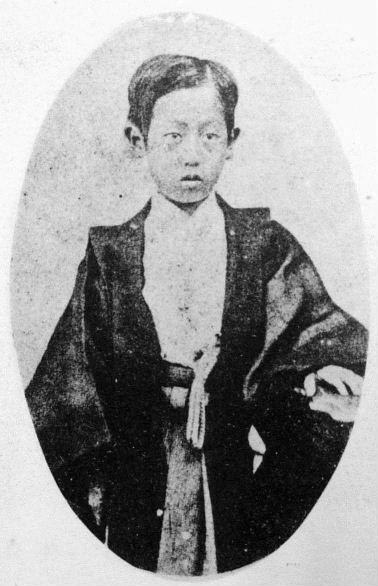- Tokugawa Iesato
Infobox_Person | name = Tokugawa Iesato
other_names =

caption =Tokugawa Iesato in his younger years
birth_date = birth date|1863|8|24|mf=y
birth_place =
death_date = death date and age|1940|6|5|1863|8|24|mf=y, aged age|1863|8|24|1940|6|5
titles = Head of the Tokugawa Family, 2nd Prince Tokugawa
spouse =
children =Tokugawa Iemasa , Tokugawa Yasuko, Tokugawa Ryōko, Tokugawa Toshiko
relations =Prince nihongo|Tokugawa Iesato|徳川家達|Tokugawa Iesato, 1st Prince Tokugawa (24 August ,1863 -5 June 1940 ) was the first head of the Tokugawa family after the overthrow of theTokugawa bakufu and figure in Japanese politics during the Meiji, Taishō and early Showa periods.Early life
Tokugawa Iesato was born to the Tayasu branch of the Tokugawa clan, under the name Kamenosuke, he became its 16th head, following the resignation of the last "
Shogun ,"Tokugawa Yoshinobu . His brothers wereTokugawa Satotaka andTokugawa Takachiyo , who also held the Tayasu headship at different times. Iesato was also briefly the "daimyo " of the short-livedShizuoka han , before theabolition of the han system in the early 1870s. Though he was Yoshinobu's adopted son, his guardian at the time wasMatsudaira Naritami , the former lord of theTsuyama domain .Career and legacy
In 1877, Iesato was sent to
Great Britain for studies. He returned to Japan in 1882, and was given the title of koshaku (prince) under the "kazoku " peerage system. He became a member of theHouse of Peers from its creation in 1890, and served as President of the House of Peers from 1901-1933. When the administration of Prime MinisterYamamoto Gonnohyoe was brought down by theSiemens scandal , there was a strong movement to have Tokugawa Iesato nominated to be his successor. FollowingWorld War I , Iesato served on the Japanese delegation to theWashington Naval Conference . His support of theUnited States position on the 10:10:6 division of naval strength between the United States,Great Britain and Japan drew considerable wrath from the ultra-rightist movements and conservative factions within theImperial Japanese Navy .Iesato is remembered for having recovered the political fortunes and reputation of the Tokugawa family, holding many senior government positions before his retirement, including a tenure as 6th head of the
Japanese Red Cross Society, head of theJapan-America Society , and President of the national organizing committee for the 1940 Olympics.Iesato is quoted as once having said about his adoptive father: "Yoshinobu destroyed the Tokugawa house; I rebuilt it."
His grave is at the Tokugawa family cemetery at the temple of Kanei-ji in
Ueno, Tokyo . He was succeeded byTokugawa Iemasa .References
* Banno, Junji. "The Establishment of the Japanese Constitutional System". Routledge (1992). ISBN 0-415-00497-7
* Fraser, Andrew. "Japan's Early Parliaments, 1890-1905". Routledge (1995). ISBN 0-415-03075-7
*Lebra, Sugiyama Takie. "Above the Clouds: Status Culture of the Modern Japanese Nobility". University of California Press (1995). ISBN 0-520-07602-8
* Sims, Richard. "Japanese Political History Since the Meiji Renovation 1868-2000". Palgrave Macmillan. ISBN 0-312-23915-7
Wikimedia Foundation. 2010.
